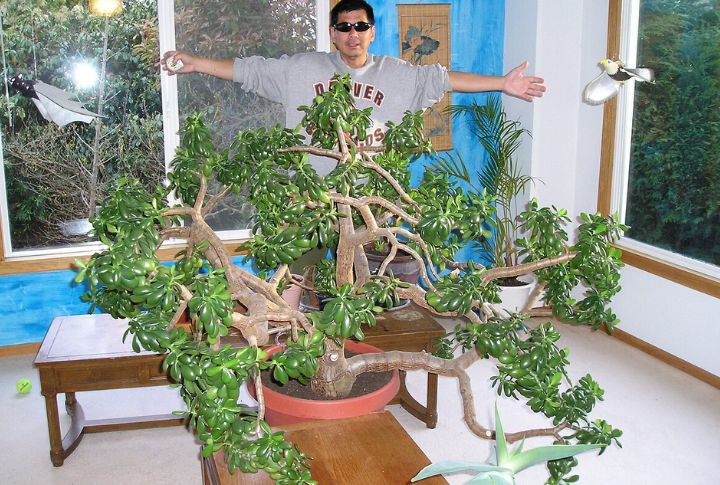
Jade plants sometimes reward you with clusters of tiny white or pink blooms. But there are two catches: the plant needs to be mature, and even then, those flowers may appear only once a year.
When nothing happens, it’s tempting to think you did something wrong. The truth is, jade plants are just particular about the conditions they need. If yours is stuck in leaf-mode, there’s probably a reason buried in its routine.
Let’s dig into what’s holding it back and how to gently nudge it toward blooming.
Their Native Climate Holds The Clues
In their South African homeland, jade plants experience warm, dry days and cool, crisp nights. Re-creating those conditions in your own space can make a big difference. Moving the plant outdoors in summer, then giving it cooler nights in fall, mirrors its natural rhythm and helps trigger blossoms.
That seasonal shift is what the plant understands. By following its native cues, you make flowering feel natural rather than forced.
Age Matters More Than You Think
Jade plants don’t flower when they’re young. They usually need at least 3–5 years of growth before they even think about blooming, and some cuttings can take closer to a decade. During those early years, the plant’s energy goes into roots and leaves rather than blossoms.
So if yours hasn’t hit that age yet, patience is key. Give it time to mature, and it will be ready to bloom when conditions line up.
Cooler Nights Kickstart Blooms
A seasonal rest period is essential. Lower nighttime temperatures—around 60°F in the fall—combined with drier soil and shorter days, encourage the plant to produce buds. Without that contrast between warm days and cool nights, flowering rarely happens indoors.
Think of it as a signal. By creating those cooler, drier conditions for a few weeks, you nudge your jade to shift from leafy growth to flower production.
Light Is The Real Game Changer
Sunlight is a must. To bloom, jade plants need several hours of direct light each day, ideally from a bright south- or west-facing window. This exposure fuels the plant’s energy reserves and helps it form buds.
One easy indicator is leaf color. If the tips show a faint reddish edge, that’s a sign your jade is soaking up enough light to stay healthy and potentially bloom.
Watering Habits Can Hold It Back
Just like most botanics, Jade plants also don’t handle extra water very well. They like soil that drains quickly—something like a cactus or succulent mix—and they’re happiest when you wait until the uppermost inch is dry before giving them a drink. If the roots stay soggy, the plant skips the natural stress cycle it needs to set flowers.
During fall, let the soil dry out a little longer between waterings to mimic the plant’s native climate—and that helps push it closer to flowering.
Closing Thought
Flowering in jade plants is not impossible. It’s rare because they’re just picky about timing and care. With maturity, strong light, the proper watering rhythm, and seasonal changes, the odds of pink or white blooms increase significantly. Treat your plant like it’s back in its original home, and one day you’ll be rewarded with a cluster of delicate starry flowers.

